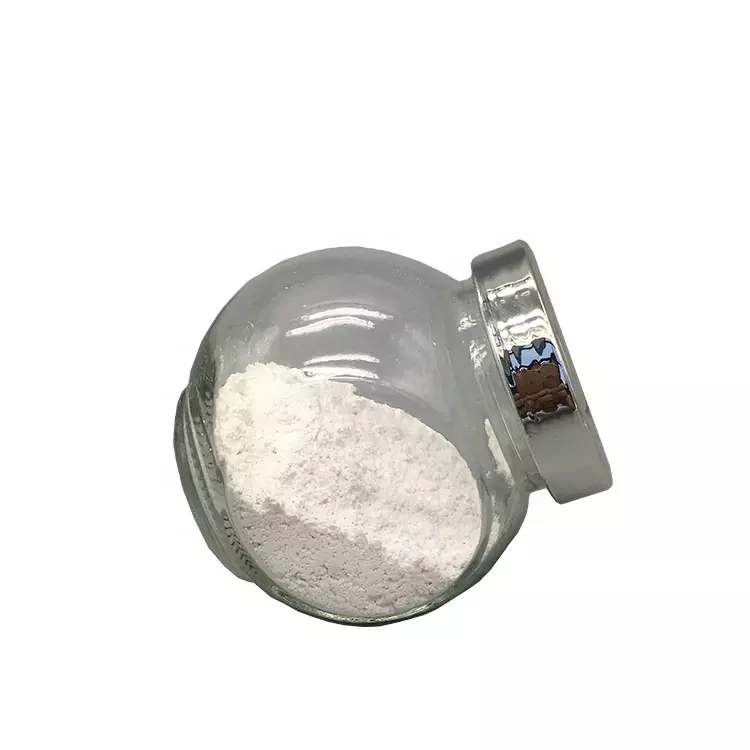Scandium oxide (Sc₂O₃), a chemical compound composed of divalent oxygen anions and trivalent scandium cations, presents as a starkly white, finely divided powder under ambient conditions, its seemingly unassuming appearance belying a wealth of intriguing physicochemical attributes that underpin its increasingly significant role in a diverse array of advanced technological applications. The fundamental properties of this sesquioxide, encompassing its physical characteristics and chemical reactivity, are not merely academic curiosities but rather the very determinants of its utility across disparate fields, ranging from high-performance lighting solutions to the creation of advanced metallic alloys with enhanced performance characteristics.

Breif introduction
| Product | Scandium oxide,Scandium(III) oxide |
| Cas | 12060-08-1 |
| MF | Sc2O3 |
| Purity Sc2O3/REO | 99% ~ 99.999% |
| Molecular Weight | 137.91 |
| Density | 3.86 g/cm3 |
| Melting point | 2485°C |
| Appearance | White powder |
| Solubility | Insoluble in water, moderately soluble in strong mineral acids |
| Stability | Slightly hygroscopic |
| Multilingual | ScandiumOxid, Oxyde De Scandium, Oxido Del Scandium |
| Melting Point | 2403°C |
| Exact Mass | 137.897 g/mol |
| Monoisotopic Mass | 137.896564 Da |
| Brand | Epoch |
The physical profile of scandium oxide is marked by its notable thermal robustness, exhibiting an exceptionally high melting point that typically falls within the range of 2400 to 2485 degrees Celsius, a testament to the strong interatomic forces within its crystalline lattice. Its boiling point is even more elevated, further underscoring its refractory nature and its capacity to withstand extreme thermal environments without undergoing deleterious phase transitions. With a specific gravity approximating 3.86 grams per cubic centimeter, it possesses a moderate density, a factor that influences the overall weight considerations in applications where material lightness is a critical design parameter. Furthermore, scandium oxide demonstrates a marked insolubility in aqueous media, a characteristic stemming from the robust ionic bonding within its structure, although it readily undergoes dissolution in concentrated mineral acids upon heating, forming the corresponding scandium salts, a chemical behavior exploited in various synthetic and purification processes. Chemically, scandium oxide exhibits amphoteric tendencies, though its basicity is more pronounced than its acidity, allowing it to react with acidic species to form salts. Interestingly, it can also absorb atmospheric carbon dioxide, particularly in the presence of moisture, leading to the formation of surface carbonates or hydroxycarbonates, a phenomenon that necessitates careful storage to maintain its purity.
Beyond its tangible characteristics, scandium oxide exhibits a fascinating suite of optical and electronic properties that are increasingly being harnessed in advanced technologies. Its refractive index, relatively high at approximately 1.85 to 1.96 depending on wavelength and material density, makes it valuable in the fabrication of optical coatings and lenses, enhancing the efficiency of light transmission and manipulation. Exhibiting significant transmissivity across the visible and near-infrared portions of the electromagnetic spectrum, it serves as a crucial component in optical windows and as a transparent substrate for thin films in optoelectronic devices. Moreover, when strategically doped with specific rare earth ions, scandium oxide displays photoluminescence, emitting light of specific wavelengths upon excitation, a property central to its use in energy-efficient solid-state lighting and advanced display technologies. In its intrinsic state, scandium oxide functions as an electrical insulator, characterized by high resistivity, a crucial attribute for its application as a dielectric material in electronic components, preventing unwanted current leakage. Its relatively high dielectric constant also renders it suitable for use in capacitors, facilitating efficient energy storage within electronic circuits.
To comprehend the macroscopic behavior of scandium oxide, an understanding of its underlying atomic architecture is paramount. It crystallizes in the cubic Bixbyite structure, a common motif among rare earth sesquioxides, characterized by a face-centered cubic arrangement of oxide anions with scandium cations occupying specific octahedral sites, albeit with inherent anionic vacancies. These structural features dictate the interatomic distances and bonding angles, ultimately influencing the material's overall stability and properties. The highly ordered and robust ionic bonding within this crystal lattice contributes significantly to the material's high melting point and chemical inertness under many conditions.
Venturing beyond its fundamental attributes, scandium oxide exhibits a range of advanced and emerging properties that are attracting significant interest in cutting-edge research. Its surface demonstrates catalytic activity for certain chemical transformations, and its ability to adsorb various molecules is being explored in sensor technologies. While an electrical insulator, it possesses a measurable thermal conductivity, enabling heat dissipation, a crucial factor in high-power electronic applications. Its relatively low coefficient of thermal expansion ensures dimensional stability across a range of temperatures, a desirable trait in precision engineering. Furthermore, its significant hardness and moderate fracture toughness contribute to its durability in demanding mechanical environments.
Ultimately, the unique confluence of scandium oxide's physical, chemical, optical, electronic, and mechanical properties dictates its diverse and expanding range of applications. Its thermal stability and luminescent properties underpin its use in high-intensity lighting. Its ability to enhance the strength and weldability of aluminum alloys, through grain refinement, is critical in aerospace and automotive engineering. Its dielectric and insulating properties are exploited in electronic ceramics and capacitors. Its refractive index and transparency are leveraged in optical coatings. The catalytic activity of its surface is explored in chemical synthesis, and its adsorption capabilities are utilized in sensor technologies. The tailored doping of scandium oxide with rare earth elements enables the creation of specialized phosphors for advanced lighting and display applications. As research continues to unravel the intricacies of its properties and explore novel synthesis methodologies, the applications of scandium oxide are poised for further expansion, solidifying its role as a critical material in future technological advancements.
Post time: May-08-2025